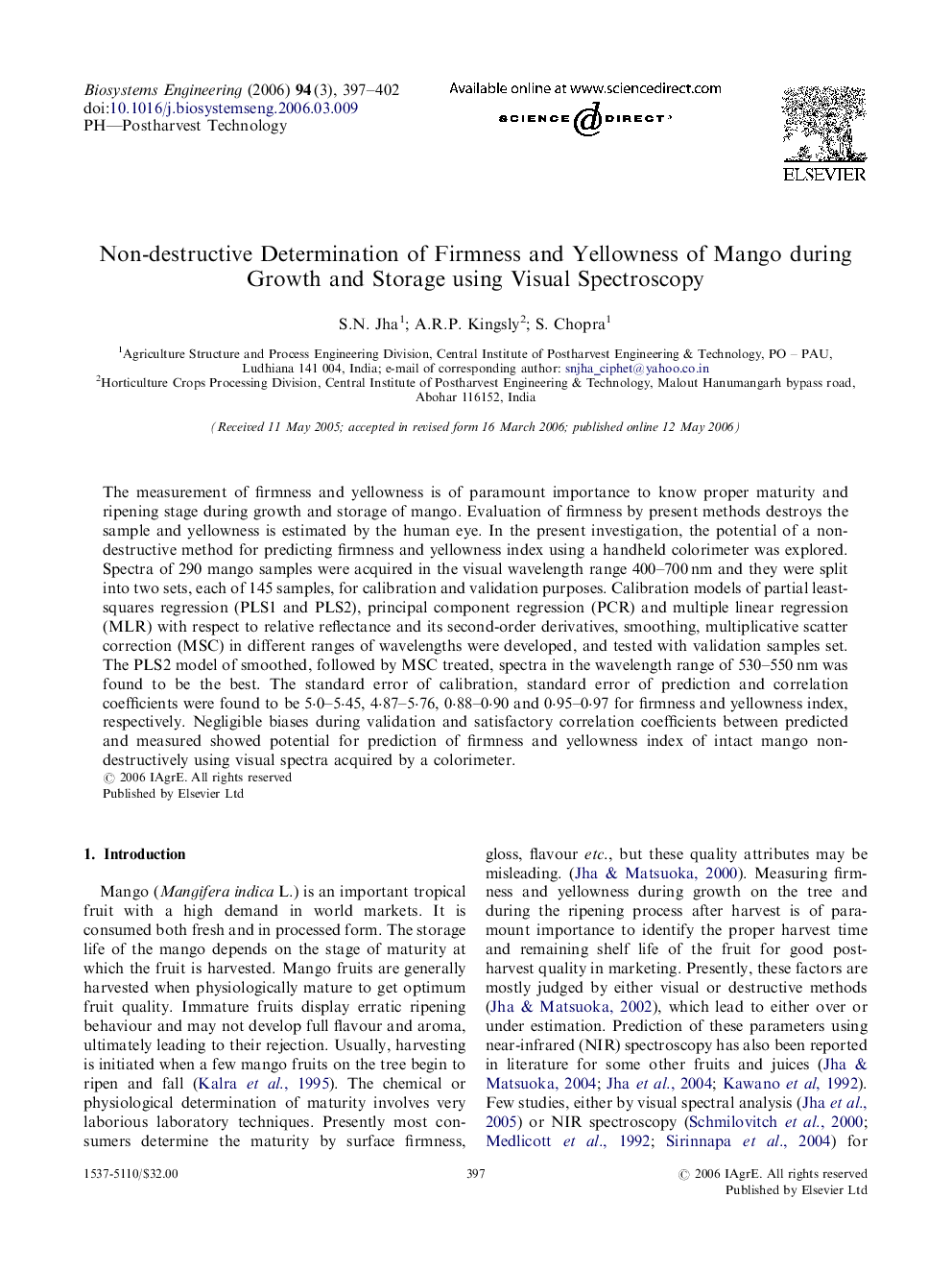| Article ID | Journal | Published Year | Pages | File Type |
|---|---|---|---|---|
| 1712732 | Biosystems Engineering | 2006 | 6 Pages |
The measurement of firmness and yellowness is of paramount importance to know proper maturity and ripening stage during growth and storage of mango. Evaluation of firmness by present methods destroys the sample and yellowness is estimated by the human eye. In the present investigation, the potential of a non-destructive method for predicting firmness and yellowness index using a handheld colorimeter was explored. Spectra of 290 mango samples were acquired in the visual wavelength range 400–700 nm and they were split into two sets, each of 145 samples, for calibration and validation purposes. Calibration models of partial least-squares regression (PLS1 and PLS2), principal component regression (PCR) and multiple linear regression (MLR) with respect to relative reflectance and its second-order derivatives, smoothing, multiplicative scatter correction (MSC) in different ranges of wavelengths were developed, and tested with validation samples set. The PLS2 model of smoothed, followed by MSC treated, spectra in the wavelength range of 530–550 nm was found to be the best. The standard error of calibration, standard error of prediction and correlation coefficients were found to be 5·0–5·45, 4·87–5·76, 0·88–0·90 and 0·95–0·97 for firmness and yellowness index, respectively. Negligible biases during validation and satisfactory correlation coefficients between predicted and measured showed potential for prediction of firmness and yellowness index of intact mango non-destructively using visual spectra acquired by a colorimeter.
